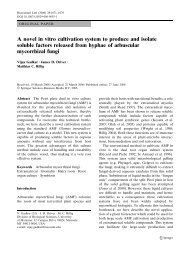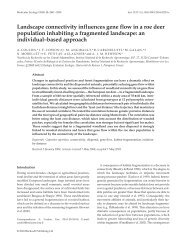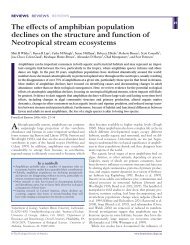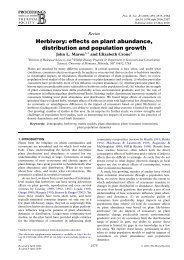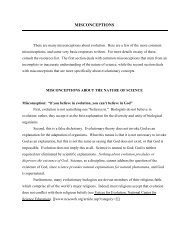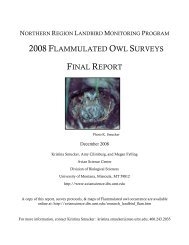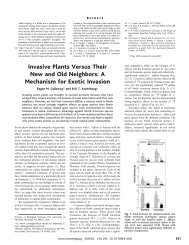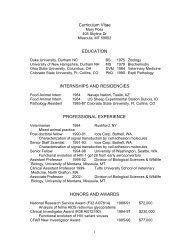Evolution of Antibiotic Resistance-Printable Format - Teach ...
Evolution of Antibiotic Resistance-Printable Format - Teach ...
Evolution of Antibiotic Resistance-Printable Format - Teach ...
You also want an ePaper? Increase the reach of your titles
YUMPU automatically turns print PDFs into web optimized ePapers that Google loves.
Background Information on <strong>Antibiotic</strong> <strong>Resistance</strong> for<br />
<strong>Teach</strong>ers<br />
What are <strong>Antibiotic</strong>s?<br />
In the late 1920’s, the Scottish microbiologist Alexander Fleming returned from a trip<br />
to find that one <strong>of</strong> his petri dishes containing the bacterium, Staphylococcus aureus, was<br />
contaminated with the mold, Penicillium notatum. Like a good scientist, he did not just<br />
throw it out and start over; rather, he made an observation: there were no bacterial staph<br />
colonies growing directly around the mold. There was a zone that was free <strong>of</strong> bacterial<br />
growth directly surrounding the mold. Upon closer inspection, he noticed that the mold was<br />
secreting a liquid (now called penicillin) that he later learned was the cause <strong>of</strong> death to the<br />
bacteria growing in close proximity to the mold.<br />
What Fleming had discovered (actually, re-discovered) was an antibiotic: a chemical<br />
that inhibits the growth <strong>of</strong> or kills microorganisms (e.g. bacteria). <strong>Antibiotic</strong>s have evolved<br />
in fungi and bacteria as defenses against other microbes. Microorganisms <strong>of</strong>ten compete<br />
with each other for the same resources. In response to competition, many fungal and<br />
bacterial species have evolved chemical weapons to inhibit other species. <strong>Antibiotic</strong>s are the<br />
chemical weapons <strong>of</strong> fungi and bacteria.<br />
What do antibiotics do? How do they kill bacteria? They work through several<br />
different means. Some inhibit the synthesis (or production) <strong>of</strong> bacterial cell walls; some<br />
inhibit the synthesis <strong>of</strong> proteins; still others inhibit the replication <strong>of</strong> bacterial DNA. All <strong>of</strong><br />
these are, <strong>of</strong> course, detrimental to the bacteria that encounter the antibiotic. So detrimental,<br />
in fact, it <strong>of</strong>ten kills them.<br />
We humans know a good thing when we see it. A chemical substance that kills<br />
bacteria: we could use this to our advantage! And did we ever. Within a few decades, both<br />
naturally occurring and synthetic antibiotics were produced in mass quantities and given to<br />
people who were sick with infectious diseases. And they worked. <strong>Antibiotic</strong>s were the<br />
miracle cure to all kinds <strong>of</strong> infectious diseases that had been plaguing humans for<br />
hundreds <strong>of</strong> years. <strong>Antibiotic</strong>s worked so well, in fact, that in 1969, the U.S. Surgeon<br />
General declared: “it is time to close the book on infectious disease.” The war against<br />
bacteria was over, and we had won!<br />
Or had we?<br />
<strong>Antibiotic</strong> 1 <strong>Resistance</strong><br />
In 1941, all strains <strong>of</strong> staphylococcal bacteria (common causes <strong>of</strong> wound and<br />
postoperative infection) were susceptible to (killed by) penicillin. Three years later, one<br />
1 A more general term is antimicrobials; this includes antibiotics as well as drugs that are used to treat diseases<br />
caused by microbes other than bacteria (e.g. malaria, HIV/AIDS). Although antibiotics are exclusively discussed<br />
here, the evolutionary principles described are similar for all pathogenic microbes, not just bacteria.



